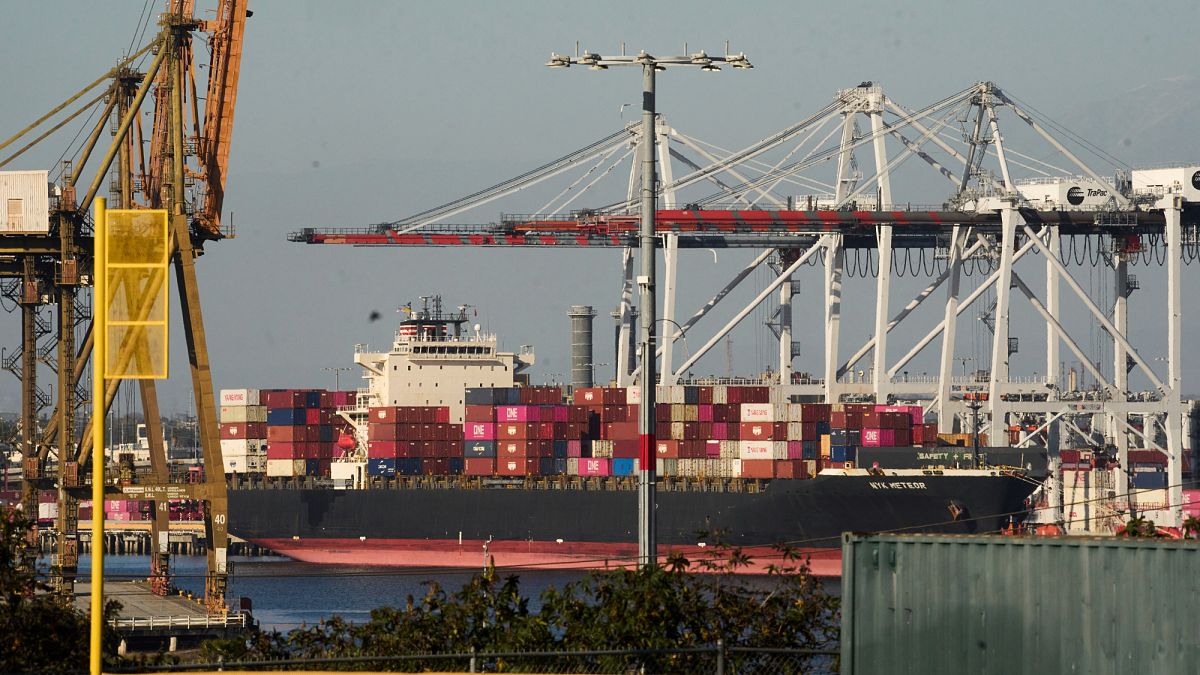The Trump administration has announced the imposition of fees on Chinese-built and Chinese-owned vessels docking at US ports, marking a further escalation in the trade war between the world’s two largest economies.
The decision, revealed by the Office of the United States Trade Representative (USTR), follows a one-year investigation initially launched under the Biden administration.
“Ships and shipping are vital to American economic security and the free flow of commerce,” said Ambassador Greer. “The Trump administration’s actions will begin to reverse Chinese dominance, address threats to the US supply chain, and send a demand signal for US-built ships,” the USTR said in a statement.
Under the new policy, Chinese-built and owned ships will face fees calculated based on net tonnage per voyage into the US. The first phase of the policy will take effect in 180 days. A second phase, targeting foreign-built liquefied natural gas (LNG) vessels, is scheduled to be implemented in three years.
Background on China’s shipbuilding practices
In April 2024, the USTR launched an investigation into China’s shipbuilding practices under Section 301 of the 1974 Trade Act. The probe proposed service fees of up to $1 million for each Chinese-built vessel and $1.5 million for foreign-owned ocean carriers with fleets that include Chinese-built ships.
Amid China’s rapidly expanding automotive and shipping sectors, the country has significantly increased its global maritime footprint. According to data from Veson Nautical, Chinese-built vessels accounted for 81% of the global shipbuilding market share in 2024. In the energy sector, China holds approximately 48% of the liquefied petroleum gas (LPG) vessel market and 38% of the LNG market.
The USTR stated that five national labour unions had petitioned for an investigation on 12 March 2024, citi concerns over China’s growing dominance in maritime logistics and shipbuilding. The USTR concluded that this dominance is “unreasonable because it displaces foreign firms, deprives market-oriented businesses and their workers of commercial opportunities, and lessens competition. It creates dependencies on China, increasing risk and reducing supply chain resilience.”
In response to the initial proposal last year, China’s Ministry of Commerce called the US investigation “a mistake on top of a mistake.” No further response has yet been issued following the USTR’s latest announcement.
Trump hints at no further tariff increases on China
In a contradictory comment, Trump said that he does not want to raise tariffs further on Chinese goods, citing concerns that trade between the two countries could stall.
“At a certain point, I don’t want them to go higher because at a certain point, you make it where people don’t buy. So I may not want to go higher, or I may not want to even go up to that level,” he told reporters at the White House, “I may want to go to less because, you know, you want people to buy.”
The Trump administration has imposed 145% tariffs on all Chinese imports. In retaliation, China has implemented tariffs of 125% on US goods. China said last week that it would “ignore” Trump’s tariffs, calling it a “meaningless numbers game.” Instead, China indicated it may shift retaliatory measures to the US services sector, such as legal consultancy, tourism, and education.

